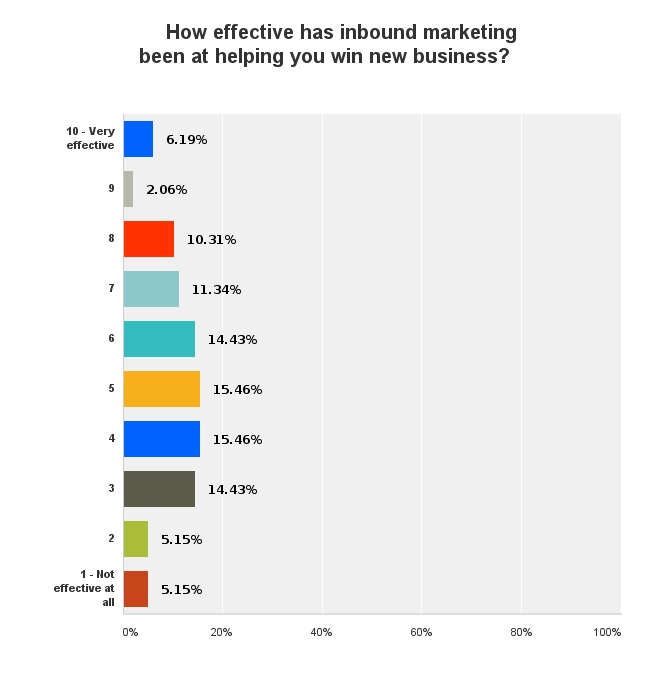Agency New Business-Sick Of Hearing About Inbound Yet?
“Inbound,” “thought leadership,” “content”-buzzwords that continue to carry over from last year in regards to agency new business.
The process undoubtedly presents large challenges for many agencies, predominantly due to time constraints, uncertainty in how to create content and difficulty in creating a consistent process.
In our 2014 RSW/US Ad Agency New Business New Year Outlook Report, only 30% of Agencies said their inbound marketing program is helpful in generating new business.

Reasons given for this fairly low percentage: “poor leads,” believing prospects are “saturated” and “inconsistency” of their own efforts to support the inbound program.
However, 64% of agencies we surveyed said they have/do use inbound to support their Agency, so while half of those find their inbound component lacking, they’re giving it a shot.
Almost across the board, we find agencies start an inbound program (either internally or with an outsourced provider) and because they can’t keep up with it, or don’t have the manpower or time to act on the inbound leads, they call it a bust.
First two mistakes agencies make with any inbound effort:
They go gangbusters out of the gate and fade quickly or don’t give the effort the time needed to bear fruit.
Something to remember: 49% of Marketers in our report said they read Agency blogs at least 1x per month or more often!
But the only way you’re going to get your great agency content in front of them is with consistency and a combination inbound and outbound channels.

A well-written piece from Douglass Karr (The Premature Death of Outbound Marketing) at the Marketing Tech blog laid out this premise nicely:
The inbound marketing industry does itself a great disservice when they position themselves as an inexpensive alternative to outbound marketing. Our experience with clients has shown over and over that the combination of the two strengthens each.
Having an effective inbound marketing strategy can provide improved branding and build the trust, visibility and authority of a company. It can gather prospective leads throughout search and social mediums, collect behavioral data on them, and hand your outbound team a lead that they better understand at a time where the prospect is looking to make a purchase.
Having an effective outbound marketing strategy accelerates your inbound strategy by providing a personal touch to the inbound lead. The outbound sales representative can build a relationship with the prospect, educate them, and respond effectively to any objections the prospect may have.
Douglas mentioned the inbound industry, (agencies apparently aren’t planning on outside providers this year with only 24% stating they’ll buy into a program in 2014) but the quote is easily applicable to an effort you create internally.
Referring back to agency blogging, we just came back from a new client kickoff meeting this week where they’d done a content analysis of their efforts to date, and while our agency client hadn’t been blogging more than once a month on average, their highest traffic posts came from those that centered on their thought leadership and industry expertise.
Ideally this gives you some insightful food for thought as you consider your agency’s inbound strategy.
As I’ve said on this blog in the past: baby steps!
Challenge yourself to one post a month focused on thought leadership and your knowledge of the overall challenges or trends in the industry or space.
And follow up, even if it’s 10-20 prospects a month to start.
Your tenacity, even in small initial doses, will pay off.








